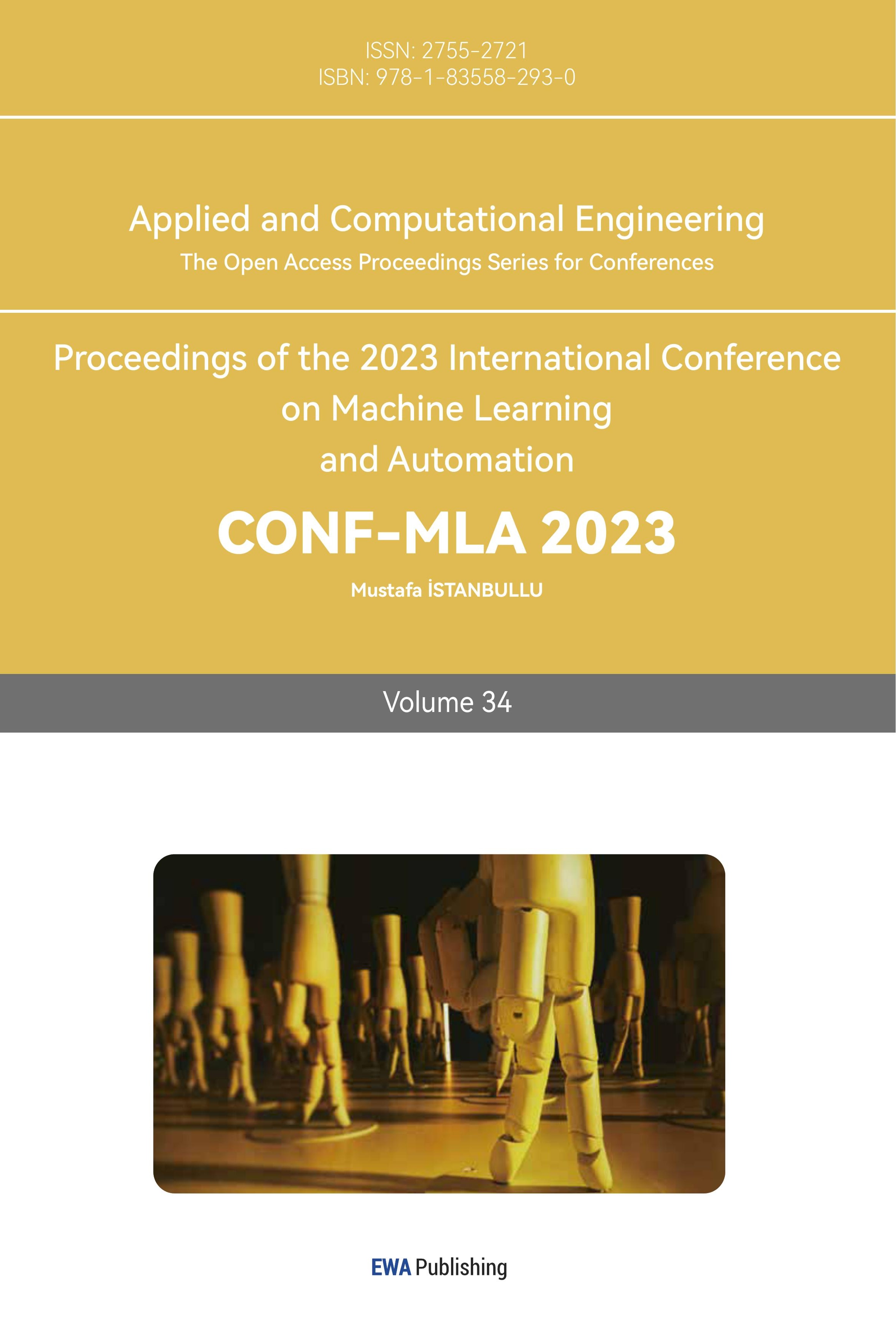References
[1]. Zhao Tiejun and Wang Ling. Delta robot sorting path optimization based on improved Greedy algorithm Modular. Machine Tools and Automated Processing Technology. 2022 Apr 12(12):58-61.
[2]. Lee HW. The study of mechanical arm and intelligent robot. IEEE Access. 2020 Jun 19;8:119624-34.
[3]. Jain R, Zafar MN, Mohanta JC. Modeling and analysis of articulated robotic arm for material handling applications. InIOP Conference Series: Materials Science and Engineering 2019 Nov 1 (Vol. 691, No. 1, p. 012010). IOP Publishing.
[4]. Zhao JS, Zhou K, Feng ZJ. A theory of degrees of freedom for mechanisms. Mechanism and Machine Theory. 2004 Jun 1;39(6):621-43.
[5]. Fabian J, Monterrey C, Canahuire R. Trajectory tracking control of a 3 DOF delta robot: a PD and LQR comparison. In2016 IEEE XXIII International Congress on Electronics, Electrical Engineering and Computing (INTERCON) 2016 Aug 2 (pp. 1-5). IEEE.
[6]. Pierrot F, Reynaud C, Fournier A. DELTA: a simple and efficient parallel robot. Robotica. 1990 Apr;8(2):105-9.
[7]. Ni H, Liu Y, Zhang C, Wang Y, Xia F, Qiu Z. Sorting system algorithms based on machine vision for Delta robot. Robot. 2016;38(1):49-55.
[8]. Dong Ziyang. Research on kiwifruit picking technology and device based on machine vision and parallel manipulator [D]. Northwest A&F University, 2022.
[9]. Zhu M, Briot S, Chriette A. Sensor-based design of a Delta parallel robot. Mechatronics. 2022 Nov 1;87:102893.
[10]. Merlet JP. Parallel robots. Springer Science & Business Media; 2006 Jul 1.
[11]. Brogårdh T. Present and future robot control development—An industrial perspective. Annual Reviews in Control. 2007 Jan 1;31(1):69-79.
Cite this article
Zhang,S. (2024). Application development analysis and prospect of express sorting system based on mechanical arm. Applied and Computational Engineering,34,108-113.
Data availability
The datasets used and/or analyzed during the current study will be available from the authors upon reasonable request.
Disclaimer/Publisher's Note
The statements, opinions and data contained in all publications are solely those of the individual author(s) and contributor(s) and not of EWA Publishing and/or the editor(s). EWA Publishing and/or the editor(s) disclaim responsibility for any injury to people or property resulting from any ideas, methods, instructions or products referred to in the content.
About volume
Volume title: Proceedings of the 2023 International Conference on Machine Learning and Automation
© 2024 by the author(s). Licensee EWA Publishing, Oxford, UK. This article is an open access article distributed under the terms and
conditions of the Creative Commons Attribution (CC BY) license. Authors who
publish this series agree to the following terms:
1. Authors retain copyright and grant the series right of first publication with the work simultaneously licensed under a Creative Commons
Attribution License that allows others to share the work with an acknowledgment of the work's authorship and initial publication in this
series.
2. Authors are able to enter into separate, additional contractual arrangements for the non-exclusive distribution of the series's published
version of the work (e.g., post it to an institutional repository or publish it in a book), with an acknowledgment of its initial
publication in this series.
3. Authors are permitted and encouraged to post their work online (e.g., in institutional repositories or on their website) prior to and
during the submission process, as it can lead to productive exchanges, as well as earlier and greater citation of published work (See
Open access policy for details).
References
[1]. Zhao Tiejun and Wang Ling. Delta robot sorting path optimization based on improved Greedy algorithm Modular. Machine Tools and Automated Processing Technology. 2022 Apr 12(12):58-61.
[2]. Lee HW. The study of mechanical arm and intelligent robot. IEEE Access. 2020 Jun 19;8:119624-34.
[3]. Jain R, Zafar MN, Mohanta JC. Modeling and analysis of articulated robotic arm for material handling applications. InIOP Conference Series: Materials Science and Engineering 2019 Nov 1 (Vol. 691, No. 1, p. 012010). IOP Publishing.
[4]. Zhao JS, Zhou K, Feng ZJ. A theory of degrees of freedom for mechanisms. Mechanism and Machine Theory. 2004 Jun 1;39(6):621-43.
[5]. Fabian J, Monterrey C, Canahuire R. Trajectory tracking control of a 3 DOF delta robot: a PD and LQR comparison. In2016 IEEE XXIII International Congress on Electronics, Electrical Engineering and Computing (INTERCON) 2016 Aug 2 (pp. 1-5). IEEE.
[6]. Pierrot F, Reynaud C, Fournier A. DELTA: a simple and efficient parallel robot. Robotica. 1990 Apr;8(2):105-9.
[7]. Ni H, Liu Y, Zhang C, Wang Y, Xia F, Qiu Z. Sorting system algorithms based on machine vision for Delta robot. Robot. 2016;38(1):49-55.
[8]. Dong Ziyang. Research on kiwifruit picking technology and device based on machine vision and parallel manipulator [D]. Northwest A&F University, 2022.
[9]. Zhu M, Briot S, Chriette A. Sensor-based design of a Delta parallel robot. Mechatronics. 2022 Nov 1;87:102893.
[10]. Merlet JP. Parallel robots. Springer Science & Business Media; 2006 Jul 1.
[11]. Brogårdh T. Present and future robot control development—An industrial perspective. Annual Reviews in Control. 2007 Jan 1;31(1):69-79.









